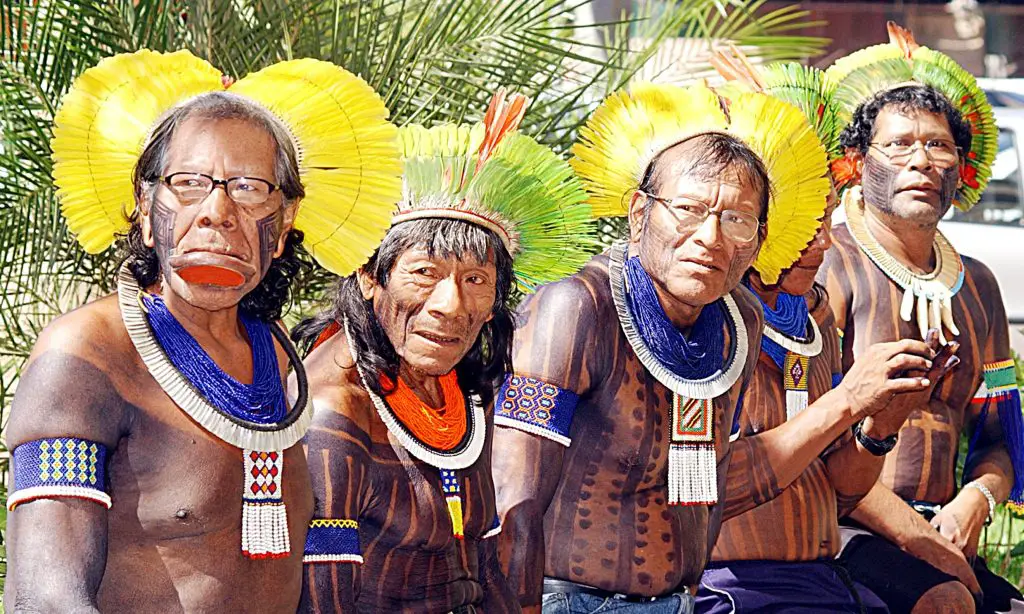Culture is tangible and non-tangible things that provide a shared meaning in a group of people. Tangible culture consists of arts, food, clothes, architecture, etc. And, non-tangible culture consists of values, thinking, beliefs, etc.
Culture is a learned behavior and people sharing it identify themselves as a part of a group that has learned similar things. The group, as a whole, gets a new identity for sharing common ideas. And a feeling of belongingness or ‘we’ feeling is developed among the group members.

Identity is how a person conceives own self and how he/she expresses it. People compare similarities and differences of self-identity with others’ individuality and recognize their identity. It can also be groups that a person is affiliated to like nationality, a specific culture, etc.
When people identify themselves as a resemblance of certain cultural group, they form their identity based on it. Such identity is called cultural identity. It is made by combination of language, cultural patterns, social structures, etc. People then regard these factors as representatives of their culture.
Concepts in Cultural Identity Theory
People use their culture to relate to the world. They behave and communicate like other members of the group to stay connected. It provides stagnant and stable frame of reference to generate meaning.
A cultural identity of a person depends upon various factors. These factors might be
- race
- gender
- sex
- sexuality
- nationality
- age
- religious beliefs
- political beliefs
- location of living
- class
- health condition
- social status
- language
- ethnicity
- ability/disability
- ancestry
- traditions
- social structures, etc.
Cultural identity theory shows why a person is the way he/she is. It shows why a person acts and behaves the way he/she does.
A single person can belong to many cultural groups simultaneously. Different traits can be adapted in various situations by someone belonging to other culture too. Culture can be over-lapping or non-overlapping.
According to Myron Lustig, culture becomes a part of an individual’s self-concept. It also changes with time and experiences. It defines people’s lifestyle as a whole.

Communicative processes are the factor that construct cultural group identities. Culture affects communication and vise versa.
If people have common language, they can communicate better and effectively. But the effectiveness seems to be affected when people of different cultural identities interact due to various barriers.
Properties of Cultural Identity
According to Jane Collier and Milt Thomas, ethnography of communication and social construction define properties of cultural identity and how a member of a cultural group expresses their identity. Properties of cultural identity are:
1. Avowal and Ascription
Avowal and ascription show what constructs cultural identity. Avowal is the expression of views on cultural identity and self-identification with the group. Ascription is how people see and perceive you through a frame of reference like stereotyping.
2. Modes of Expression
There are several modes of expressions that explains someone’s culture. These modes of expression might be
- last name
- festivals celebrated
- religious norms and beliefs, etc.
People use these modes to affirm to a group and have shared identity. There can be in-group differences and out-group similarities too.
3. Individual, Relational and Communal Identity
Individual, relational and communal identity are the components of cultural identity. They describe how an individual looks at himself and relates to any group. They also describes how interpersonal communication between members create an identity of a group. They build collective practices.
4. Enduring and Changing Aspects of Identity
Some aspects of culture are less likely to change in a long time while some others change fast. It happens due to the need for change and irrelevancy of the cultural practices that make it inapplicable to group members.
5. Affective, Cognitive and Behavioral Aspects
People have emotional attachment with their culture. This creates a particular mindset relating to their culture. Their behavior depends on the way that their mind has been set.
6. Content and Relationship Levels
People communicate to exchange messages. People interpret these messages based on their knowledge from past experiences. The experiences are formed according to their culture, the relationship and trust they share, etc.
7. Salience or Prominence
People sometimes show their belonging to any culture and sometimes they don’t. The intensity of the connection shown in a particular situation reveals prominence and importance of their culture to others. People are likely to feel connected with their culture around people from different cultures.

Examples of Cultural Identity Theory
- An Asian who is living in America, meets another person from Asia, they will identify with each other. They know that they have come from similar culture, so they feel a sense of belongingness to each other. They feel closer as they share more similar cultural traits.
- People can also identify themselves with alternative cultural groups like groups of drug users. For those people, cultural identity is based on their interests, actions and drug use behavior. They share their culture and are comfortable with people belonging to it.
Criticisms of Cultural Identity Theory
- Some researchers take cultural identity as principle and meaning of symbols rather than a group feeling.
- Many critics have ignored cultural identity to be a theoretical construct. But they take social identity as a theory.
- New forms have been made to help cultural identifiers break down understanding of individual.
- Cultural identity might create differences and conflicts between people.
- Some people might feel alienated by cultural identification. This can lead to personal or social marginalization.
[Related Reading: Sociocultural Theory]
